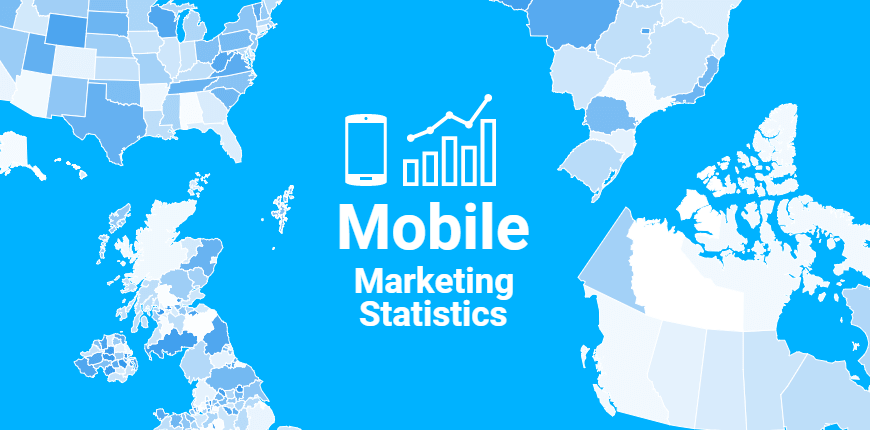I hope you enjoy reading this blog post.
If you want to get more traffic, Contact Us

Click Here - Free 30-Minute Strategy Session
Be quick! FREE spots are almost gone for this Month. Free Quote


Mobile marketing has become an essential pillar of modern-day digital strategies, reflecting the increasing reliance on mobile devices worldwide. In 2025, businesses are adapting to consumer behaviour shaped by smartphones, tablets, and wearable technology. The ubiquity of mobile usage allows brands to engage audiences personally and instantly, facilitating connections through apps, SMS, and mobile-friendly websites.
As mobile internet penetration continues to rise globally, marketers leverage advanced tools like location-based targeting and AI-driven optimisation to enhance campaign effectiveness. Importantly, mobile commerce has surged, prompting businesses to invest heavily in seamless mobile shopping experiences. This shift underscores the need for tailored, device-compatible marketing initiatives.

Click Here – Free 30-Minute Strategy Session
Be quick! FREE spots are almost gone for this Month
Mobile marketing continues to see massive adoption across global markets, reflecting its critical role in brand-building and customer interaction. Statistics indicate that as of recent surveys:
Over 92% of internet users access digital services via mobile devices.
Emerging markets like India and Brazil showcase penetration rates above 85%, driven by affordability and increased mobile connectivity.
SMS marketing records open rates of 98%, outperforming several traditional channels.
Mobile ad spending has surged, accounting for 70% of total digital ad investments worldwide.
Asia-Pacific leads adoption rates, with significant growth in mobile-first strategies targeting millennial and Gen Z demographics.
Such figures underscore the fundamental shift in consumer behaviour towards mobile-centric engagement. Experts foresee further penetration as technologies, such as 5G, enhance mobile reach globally.
Audiences are increasingly favouring mobile devices as their primary means of accessing digital content. Smartphones now account for over half of global website traffic, illustrating a clear move towards mobile-first consumption. Industries, including e-commerce, social media, and video streaming, have seen rapid growth thanks to this shift.
App Engagement: Mobile apps dominate user engagement, with the average person spending over three hours daily on their phone.
Social Media Usage: Platforms like TikTok and Instagram see a majority of their traffic via mobile, emphasising vertical video adaptability.
Purchasing Patterns: More consumers are using mobile devices for online shopping, with over 70% of all web sales coming from smartphones.
The trend highlights the need for optimised mobile user experiences across websites, apps, and marketing campaigns.
Mobile devices dominate daily routines, with users spending significant hours engaging with apps, browsing, and consuming media. Research reveals that the average adult devotes over 4 hours per day to mobile usage, highlighting its central role in digital habits.
Social media platforms hold the majority of users’ attention, accounting for approximately 30% of their screen time.
Gaming apps and streaming services rank as other major contributors, reflecting diverse interests.
Mobile reliance is notably higher among younger demographics, with Gen Z leading in usage rates.
Understanding these patterns enables marketers to align strategies with evolving digital behaviours and maximise reach on mobile-friendly channels.
The growth of mobile commerce (mCommerce) in 2025 underscores the increasing reliance on smartphones for online shopping. Reports indicate that mobile devices now account for nearly 58% of global eCommerce sales. This surge is driven by advancements in mobile payment technologies, the proliferation of shopping apps, and the convenience of on-the-go purchasing.
Key contributing factors include:
Seamless payment methods such as digital wallets and one-click checkout options.
Enhanced mobile user experiences through responsive designs and faster load times.
Expanding global internet access, making mobile shopping accessible in emerging markets.
Retailers leveraging mCommerce are also integrating AI-driven personalisation, creating customised shopping experiences that cater to user preferences. Overall, mCommerce plays a vital role in shaping the future of digital commerce.
Social media and mobile devices are intrinsically linked, transforming how users consume and share content on-the-go. With mobile devices accounting for approximately 55% of global web traffic, they are the cornerstone for accessing popular platforms like Facebook, Instagram, and TikTok.
Statistically, over 90% of social media users access platforms via mobile devices.
Engagement is significantly higher on mobile, with push notifications driving quicker responses.
The dominance of vertical video content, such as Instagram Stories or TikTok clips, highlights the optimised experience for mobile-specific formats.
As social media platforms expand features like in-app shopping and mobile-exclusive tools, this connection continues to strengthen.
Mobile video consumption has surged, with over 75% of global video views coming from mobile devices.
Statistics demonstrate an average viewing time of 40 minutes per session on smartphones for video content.
85% of Facebook videos are watched without sound, highlighting the importance of captions for engagement.
Short-form videos are especially popular, accounting for 66% of social media video views.
Video content drives higher engagement, as mobile users are 1.5 times more likely to share videos compared to other content types.
Surveys reveal that mobile users prefer vertical videos, optimised for the smartphone’s screen dimensions.
These trends suggest that brands catering to mobile users should focus on creating mobile-tailored, engaging video formats.
Marketers are consistently leaning towards mobile platforms as consumer engagement increasingly shifts to mobile devices.
Social Media Ads: Platforms like Instagram, TikTok, and Facebook are receiving significant investment, driven by their massive user bases and advanced targeting capabilities.
In-App Advertising: Popular across gaming and lifestyle apps, it allows precise audience segmentation for impactful campaigns.
Search Advertising: Mobile search ads on platforms like Google drive visibility, complemented by the growing use of voice search.
Video Advertising: Short-form mobile videos on platforms such as YouTube and Snapchat are drawing higher budgets due to their engaging format.
These trends highlight mobile’s growing dominance within advertising strategies.
Mobile apps have transformed marketing strategies by offering brands direct and personalised channels to engage consumers. Businesses leverage apps to gather valuable customer data, enabling highly targeted campaigns. Enhanced accessibility through push notifications fosters real-time communication, keeping audiences connected to brand updates, promotions, and offers.
Key features like in-app purchase options and seamless navigation encourage conversions, boosting overall sales. Mobile apps also improve customer loyalty by creating tailored experiences such as reward programmes and exclusive content. Integration with social platforms helps amplify brand reach, while analytics tools allow businesses to evaluate app performance efficiently. Brands increasingly prioritise mobile apps for building stronger consumer relationships in a competitive marketplace.
Mobile marketing performance varies significantly across regions due to differing demographics, consumer behaviour, and mobile infrastructure. In Europe, mobile penetration is notably high, with consumers favouring app-based platforms for shopping and services. North America shows robust advancements in mobile advertising technologies, with increased utilisation of location-based strategies. Asia displays remarkable dominance in mobile e-commerce, driven by rapid smartphone adoption and an expanding middle-class population. Latin America experiences growing mobile engagement, albeit limited by infrastructure in certain areas. Africa sees rising mobile activity through SMS-based campaigns, capitalising on feature phones. Regional trends reflect unique challenges, opportunities, and strategies in mobile marketing globally.
SMS and push notifications are widely regarded as two of the most powerful tools in mobile marketing. Their ability to instantly reach users directly on their devices has made them indispensable for businesses seeking engagement. Key statistics highlight their effectiveness:
SMS open rates reach an impressive 98%, far surpassing email open rates. Most recipients read texts within three minutes of receiving them.
Push notifications have average click-through rates of 7.8% for e-commerce brands, showcasing their ability to drive action.
Users are more likely to opt-in for push notifications when messages are personalised and provide clear value.
Mobile apps experience a 70% higher retention rate among users who enable push notifications.
These stats underline the unparalleled immediacy and engagement rates these channels achieve, making them vital for driving customer interactions effectively.
Search engine optimisation (SEO) for mobile devices is critical because the majority of online traffic now originates from smartphones and tablets. Websites that fail to adapt run the risk of alienating mobile users, negatively impacting user experience and conversion rates. Google, the most prominent search engine, prioritises mobile-first indexing, meaning it predominantly considers the mobile version of a website for ranking purposes.
Increasing Mobile Usage: Over half of global web traffic now comes from mobile devices.
Improved Rankings: Mobile-friendly sites are favoured by search algorithms.
Enhanced Engagement: Faster loading and responsive design keep users engaged longer.
Consistency in mobile SEO supports competitive positioning and future scalability in digital marketing strategies.
Personalisation is revolutionising mobile marketing, enabling tailored experiences that resonate with users. It leverages data insights to craft targeted messages, fostering deeper engagement. Businesses utilise advanced analytics to segment audiences based on demographics, behaviour, and preferences.
Benefits of Personalisation:
Improved customer retention and loyalty.
Increased conversion rates from tailored campaigns.
Enhanced user satisfaction with relevant content.
Mobile marketing channels, such as apps and SMS, integrate personalisation seamlessly, delivering dynamic updates directly to devices. Data-driven strategies further optimise campaigns through continuous performance tracking. Personalisation in mobile marketing not only maximises impact but also builds lasting customer relationships.
The advent of 5G is revolutionising mobile marketing by enabling faster data transfer and seamless communication. This technology allows marketers to leverage immersive content like augmented reality (AR) and virtual reality (VR) for deeper consumer engagement.
Enhanced Video Streaming: Higher speeds allow for buffer-free video ads and live streams, increasing user interaction.
Improved Personalisation: Data collection and analysis are expedited, enabling tailored advertising in real-time.
Smart Device Connectivity: 5G fosters a robust Internet of Things (IoT), allowing marketers to target users via interconnected devices.
Its reliability and low latency open doors for innovative mobile advertising strategies, reshaping consumer experiences.
Mobile marketing in 2025 faces several hurdles that can limit its effectiveness if not addressed proactively.
Device Fragmentation: The variety of smartphones, tablets, and operating systems demands adaptable and scalable marketing strategies. Marketers must optimise content for a range of screen sizes while considering differing technical specifications.
Privacy Concerns: Stricter data privacy regulations such as GDPR and evolving consumer expectations force marketers to rethink user targeting and consent-based data collection strategies.
Ad Fatigue: Consumers are increasingly overwhelmed by mobile ads, which can lead to disengagement. Balancing ad frequency with relevance becomes essential to avoid alienating users.
User Behaviour Insights: Tracking and interpreting user behaviour across apps and platforms remains challenging due to third-party cookie bans and limited real-time analytics.
Competition and Costs: Rising competition in mobile ad spaces leads to higher costs for brands aiming to gain visibility, stretching budgets and complicating ROI calculations.
Mobile marketing is poised for significant growth and transformation in the coming years. Trends indicate increasing adoption of AI-driven personalisation to enhance customer experiences. Businesses are likely to leverage predictive analytics to anticipate consumer needs and refine strategies.
5G technology expansion: Faster connections will enable richer, immersive ad formats, like AR and VR.
Voice search optimisation: As smart assistants grow, voice-activated content will become central to marketing campaigns.
In-app advertising surge: With rising app usage, targeted in-app ads will dominate mobile outreach.
These advancements underline a more dynamic, data-centric mobile marketing landscape.

LEAVE A REPLY